Red Pozole
Your folders
Your folders
Prep Time: 20 minutes
Cook Time: 6 hours, 10 minutes
Total: 6 hours, 30 minutes
Servings: 8
Cost: $6.67 /serving
Author : Chef John

Ingredients
Export 13 ingredients for grocery delivery
Instructions
Step 1
Place pork shoulder in the refrigerator. Transfer pork shanks and feet into a large pot on the stove. Add onion, carrot, and celery, salt, pepper, cumin, and bay leaves. Pour in 3 quarts water. Turn heat to high and bring to a simmer.
Step 2
Skim foam from the surface and add Mexican oregano, rubbing it between your hands as you drop it into the pot. Reduce heat to medium-low and simmer gently until pork is tender and will easily come off the bone, about 3 ½ hours.
Step 3
While the pork is simmering, place unpeeled garlic cloves in a dry pan over medium heat. Roast the cloves, shaking the pan occasionally over the heat, until slightly charred on the outside and just starting to get soft on the inside. Remove from the heat and transfer into a bowl to cool.
Step 4
Place guajillo and ancho chile peppers into a 4-cup liquid measuring cup and set a strainer over the top. Ladle some simmering broth from the pot into the strainer until chiles are covered. Let soak until the pork is finished simmering.
Step 5
When pork is finished cooking, set a strainer over a large bowl. Remove pork and vegetables with a slotted spoon and place in the strainer.
Step 6
Meanwhile, peel the cooled garlic cloves and add them to the chile pepper and broth mixture. Puree chile mixture with an immersion blender until smooth.
Step 7
Pass pureed chiles through a strainer into the pot of broth. Add a spoonful or two of the broth to the pureed chiles to help it pass through the strainer if needed. Pour the remaining 1 quart of water through the strainer, then add the pork shoulder to the pot. Simmer over medium-low heat.
Step 8
While the pork shoulder simmers, remove bones from pork shanks, then cut shanks and feet into smaller pieces.
Step 9
Once the pork shoulder has simmered for 1 ½ hours, add diced shanks and feet to the pot. Stir in hominy and continue to simmer until pork is very tender, about 1 more hour. Skim any fat from the surface as it cooks and season with more salt if needed.
Top similar recipes
Curated for youYour folders

 233 views
233 viewsRed Pozole
leitesculinaria.com
5.0
(5)
80 minutes
Your folders
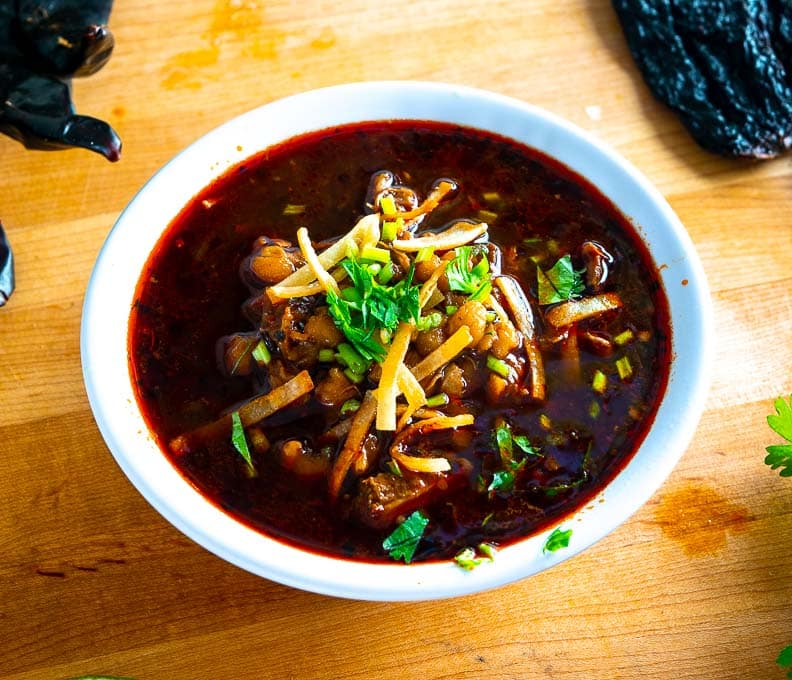
 235 views
235 viewsRed Pozole
mexicanplease.com
5.0
(10)
120 minutes
Your folders

 192 views
192 viewsRed Chicken Pozole
marthastewart.com
Your folders
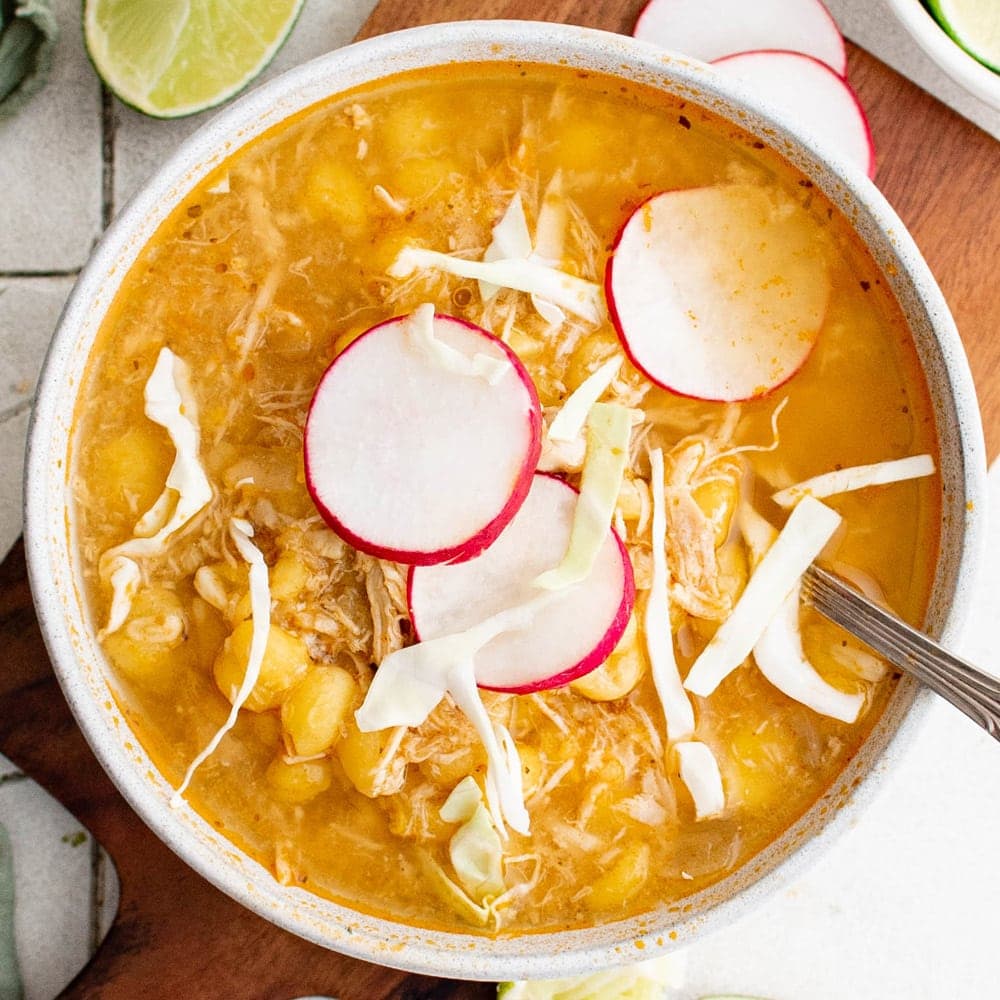
 204 views
204 viewsRed Chicken Pozole
yellowblissroad.com
4.8
(13)
30 minutes
Your folders
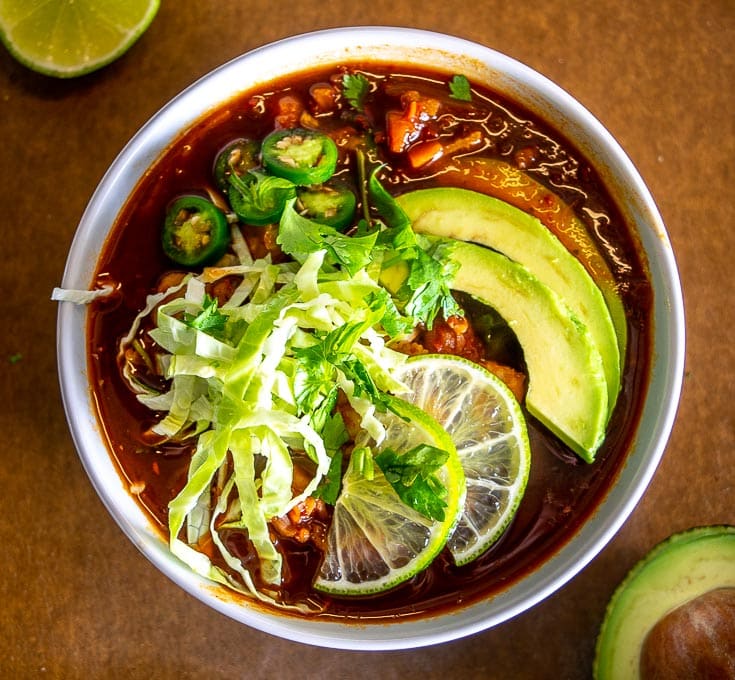
 15 views
15 viewsVegetarian Red Pozole
mexicanplease.com
4.9
(28)
30 minutes
Your folders
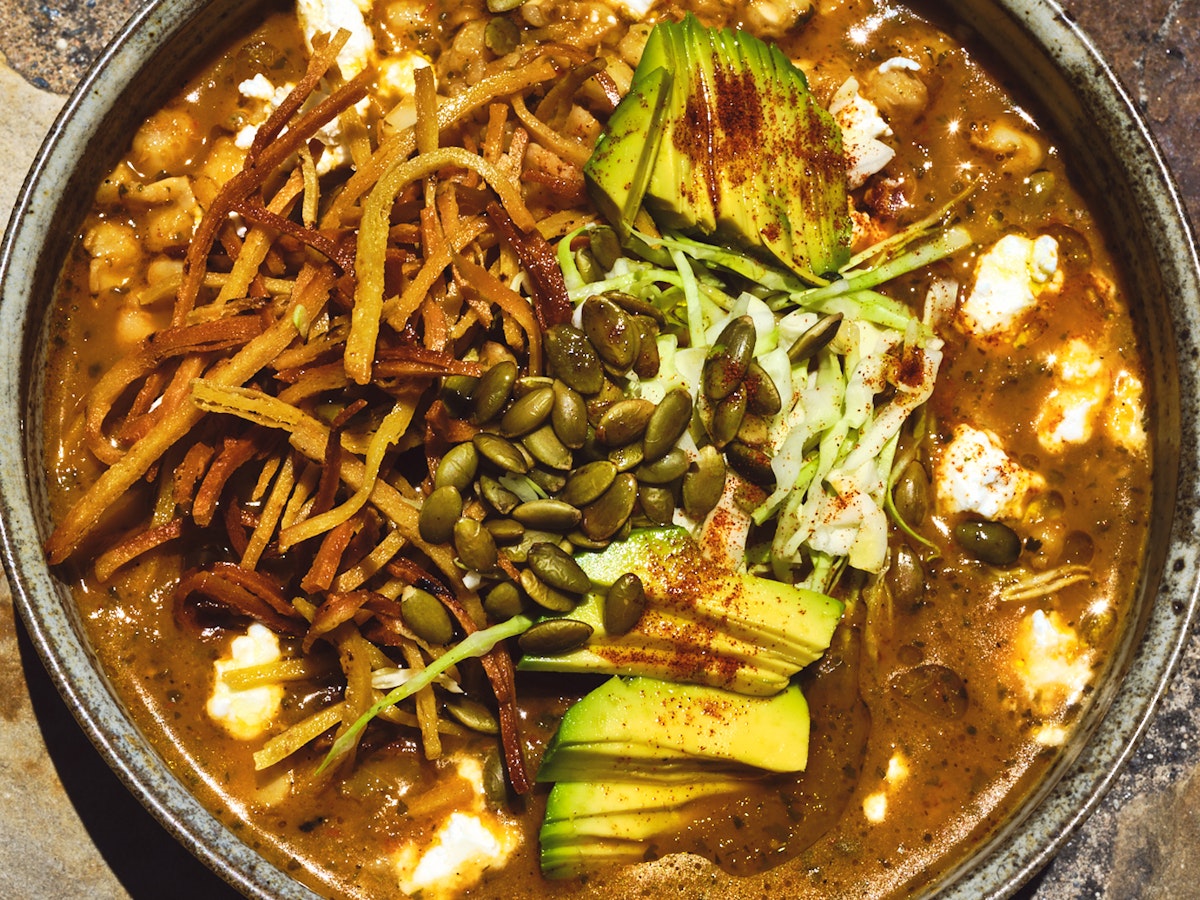
 245 views
245 viewsVegan Red Pozole (Pozole Rojo / Mex...
101cookbooks.com
5.0
(1)
60 minutes
Your folders
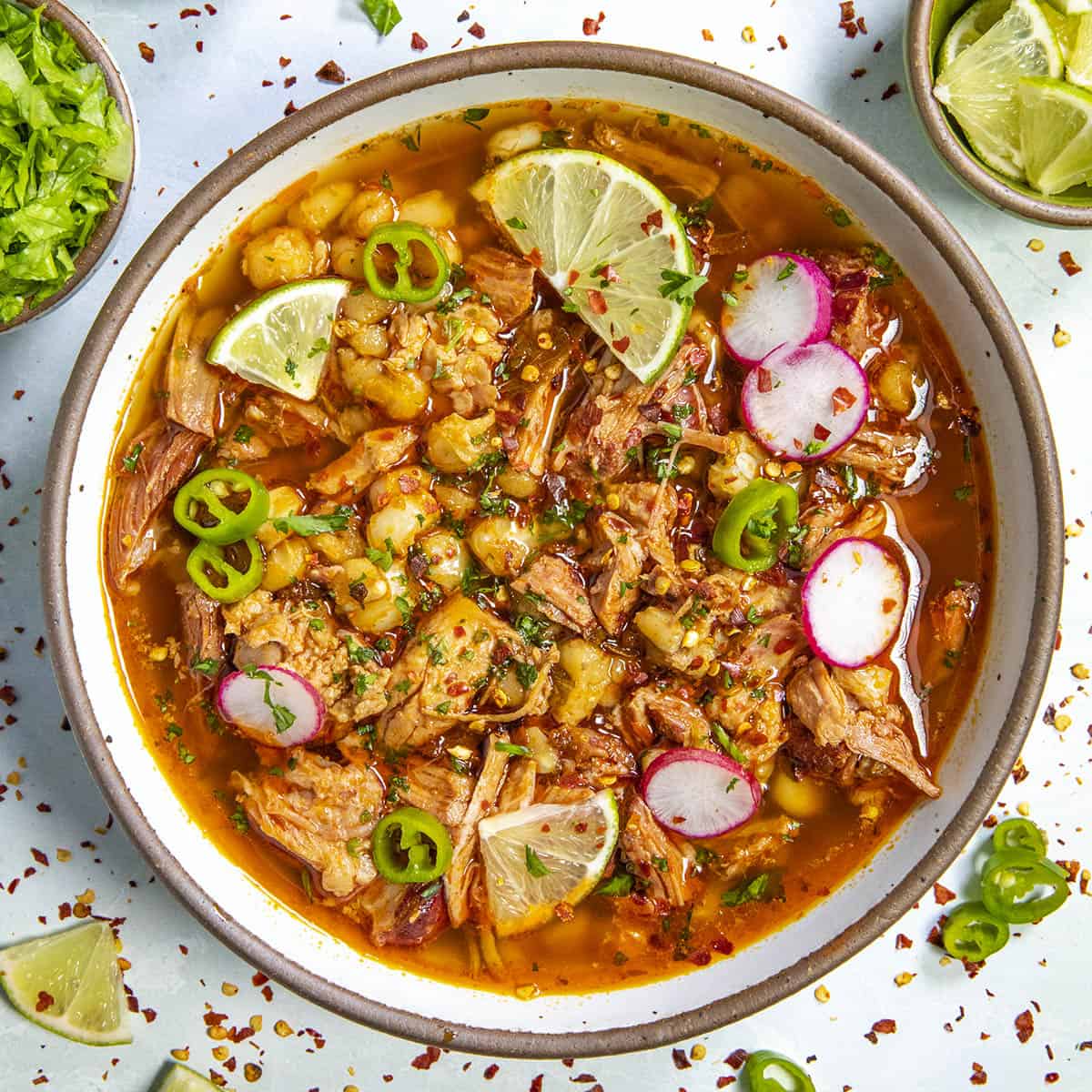
 264 views
264 viewsPozole Rojo Recipe (Red Posole)
chilipeppermadness.com
5.0
(6)
180 minutes
Your folders
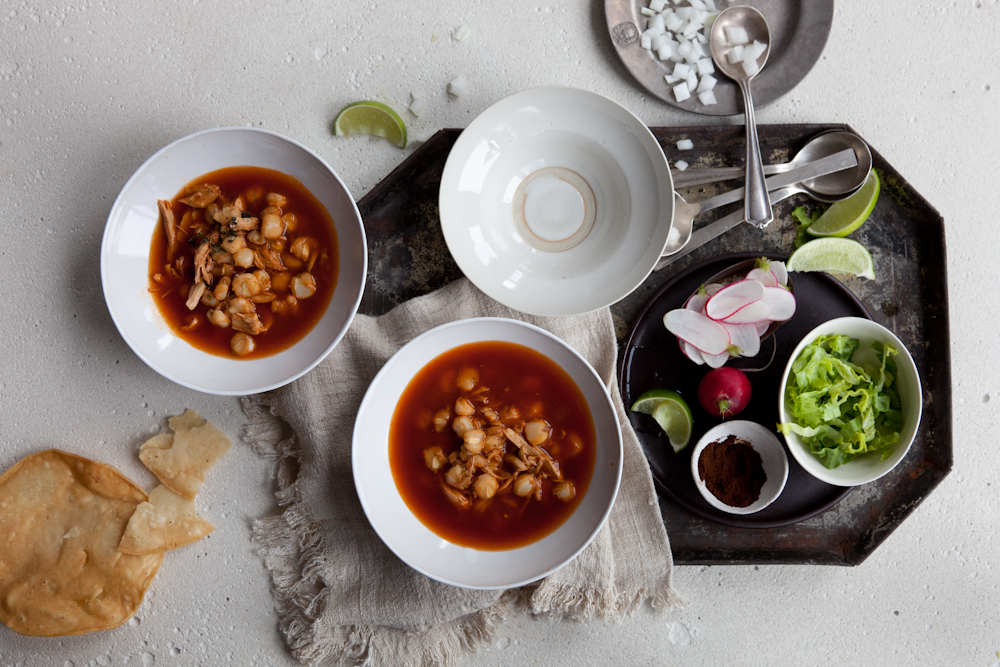
 311 views
311 viewsRed Pozole with Traditional Garnish...
patijinich.com
4.4
(5)
315 minutes
Your folders
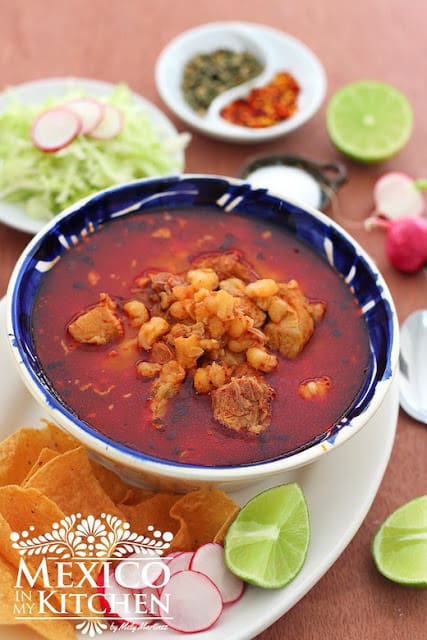
 462 views
462 viewsHow to Make Red Pozole
mexicoinmykitchen.com
4.9
(160)
50 minutes
Your folders
 63 views
63 viewsHow to Make Red Pozole
mexicoinmykitchen.com
Your folders

 234 views
234 viewsPozole
cooking.nytimes.com
4.0
(355)
Your folders

 246 views
246 viewsPozole
foodandwine.com
Your folders
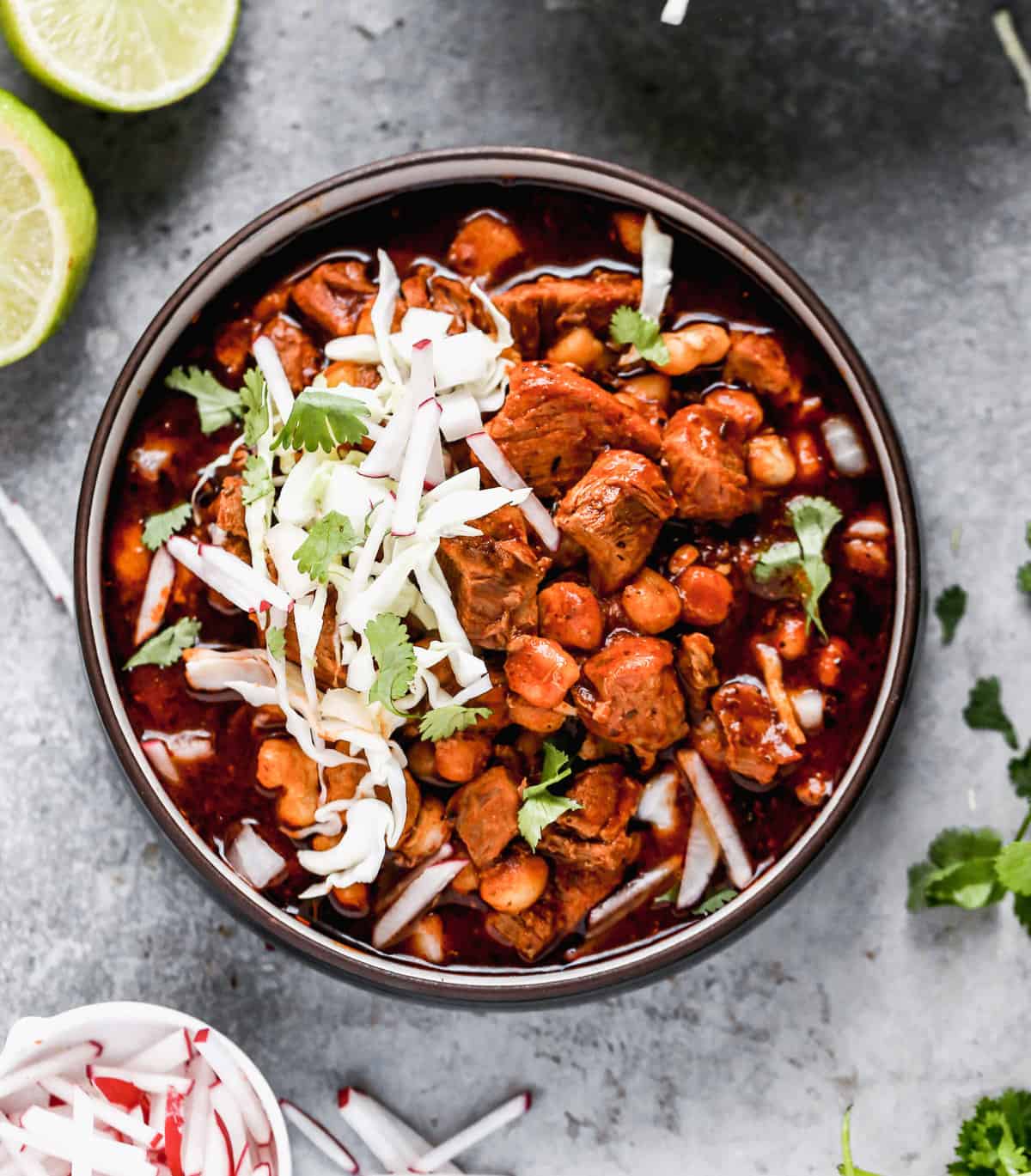
 45 views
45 viewsPozole
tastesbetterfromscratch.com
5.0
(1.1k)
120 minutes
Your folders

 572 views
572 viewsVegan Quick and Easy Red Pozole
cookingoncaffeine.com
4.3
(15)
20 minutes
Your folders
/__opt__aboutcom__coeus__resources__content_migration__simply_recipes__uploads__2011__10__posole-rojo-horizontal-b2-1600-9acf490064fb47ee9180a6a5d207a006.jpg)
 343 views
343 viewsAuthentic Pozole Rojo (Red Posole) ...
simplyrecipes.com
Your folders
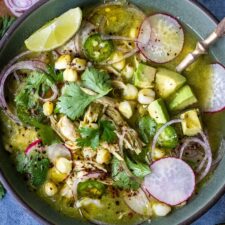
 415 views
415 viewsMexican Pozole Verde (Green Pozole...
feastingathome.com
5.0
(12)
30 minutes
Your folders
 73 views
73 viewsGreen Chicken Pozole (Pozole Verde)
restlesschipotle.com
Your folders
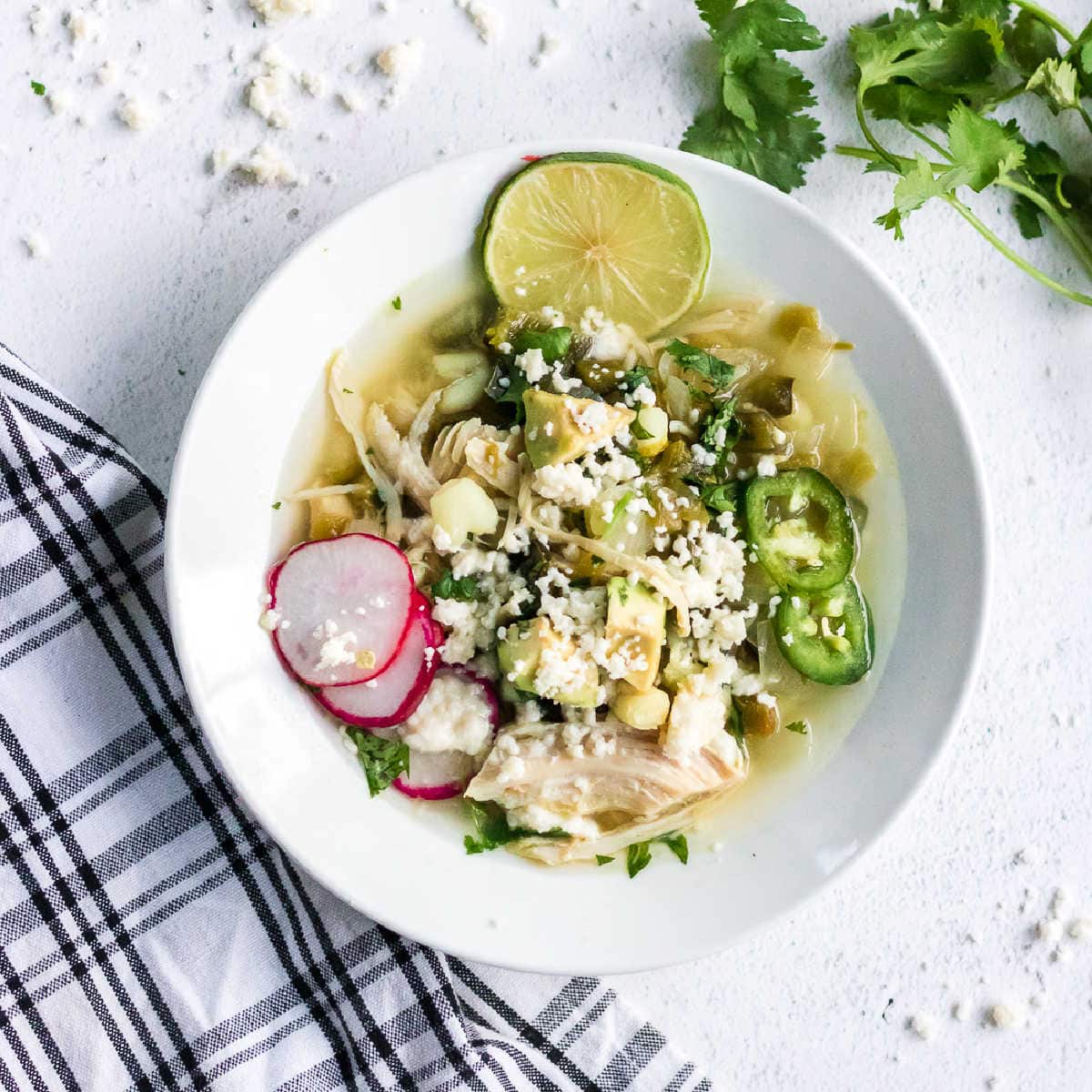
 245 views
245 viewsGreen Chicken Pozole (Pozole Verde)
restlesschipotle.com
4.8
(60)
480 minutes
Your folders
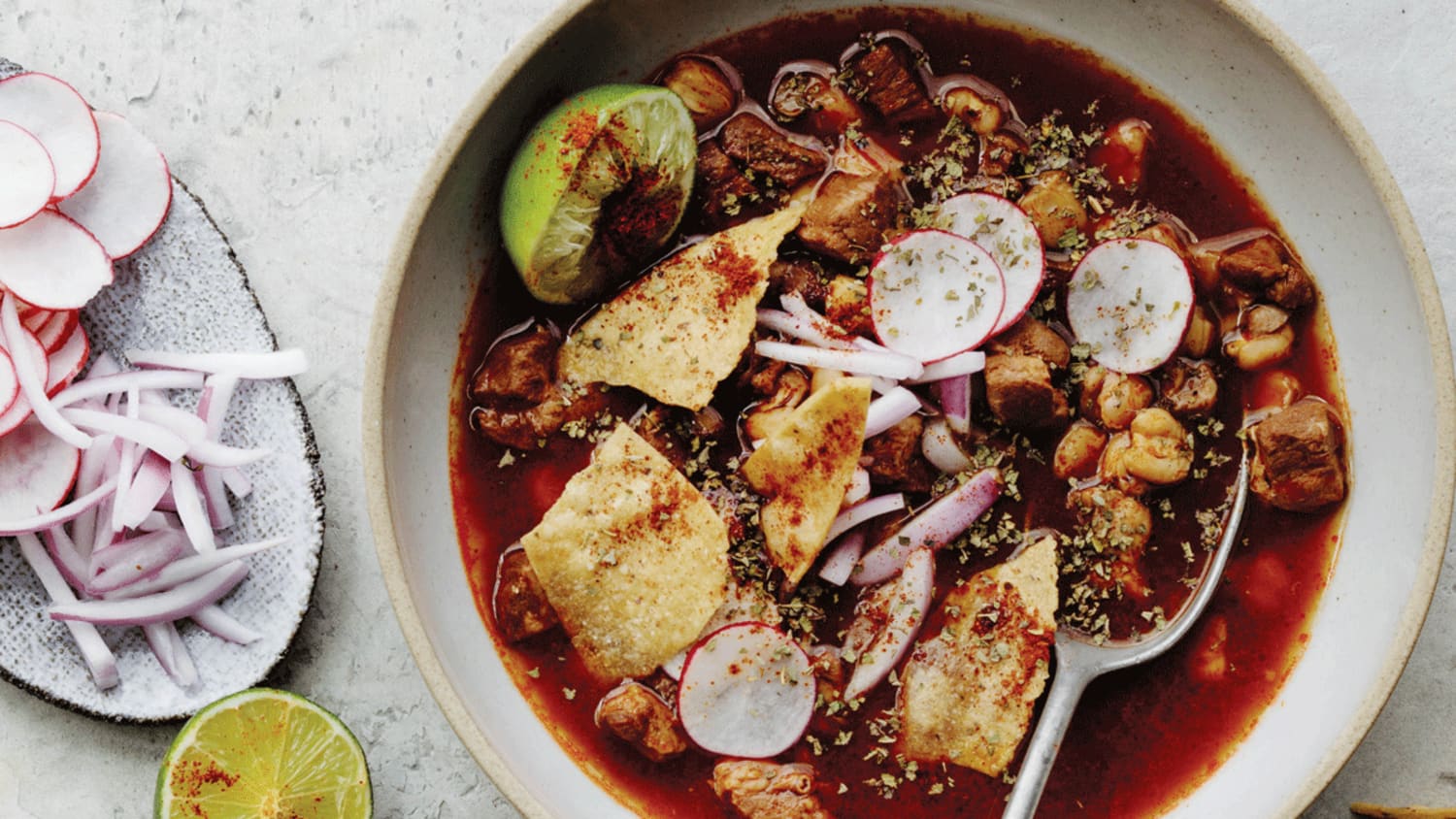
 547 views
547 viewsPozole Rojo (Red Pork Soup with Hom...
thekitchn.com
4.7
(3)